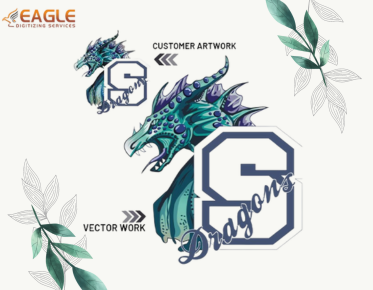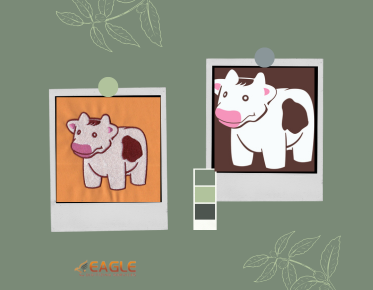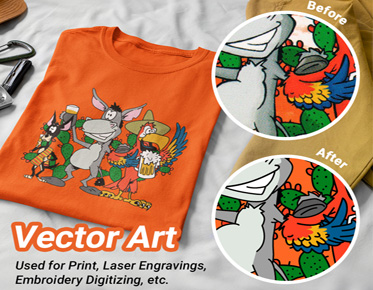How to Convert to a Vector: A Comprehensive Guide
In today's digital age, converting images to vector format is an essential skill for designers, artists, and businesses alike. Vector images are crucial for maintaining quality across different sizes and applications, from small icons to large billboards. This guide will walk you through the process of converting images to vector format, exploring various methods, tools, and best practices. Whether you're a seasoned designer or a beginner, understanding vector conversion can significantly enhance your digital projects. For more detailed insights, you can explore vector image resources available online.
Understanding Vector Images
Before diving into the conversion process, it's important to understand what vector images are. Unlike raster images, which are made up of pixels, vector images are composed of paths defined by mathematical equations. This means they can be scaled infinitely without losing quality, making them ideal for logos, illustrations, and any graphics that require resizing.
Why Convert to Vector?
There are several reasons why converting to vector is beneficial:
- Scalability: Vector images can be resized without losing quality, which is crucial for branding and marketing materials.
- File Size: Vectors often have smaller file sizes compared to high-resolution raster images, making them easier to store and share.
- Editability: Vector graphics are easier to edit, allowing for more flexibility in design adjustments.
Methods of Vector Conversion
There are several methods to convert images to vector format, each with its own set of tools and techniques. Here are some of the most common methods:
Manual Tracing
Manual tracing involves using vector graphic software like Adobe Illustrator to trace over a raster image. This method gives you complete control over the final output, allowing for precise adjustments and customizations. While time-consuming, manual tracing is ideal for complex images that require detailed attention.
Automatic Tracing
Most vector graphic software includes an automatic tracing feature that converts raster images to vector format with a few clicks. This method is faster than manual tracing but may not be as precise, especially for complex images. It's best used for simple images or when time is a constraint.
Using Online Tools
There are numerous online tools available that offer vector conversion services. These tools are user-friendly and often free, making them accessible to anyone. However, the quality of the conversion can vary, so it's important to choose a reputable service. For professional results, consider using a vector conversion service that guarantees high-quality outputs.
Best Practices for Vector Conversion
To ensure the best results when converting to vector, consider the following best practices:
Choose the Right Software
Selecting the right software is crucial for successful vector conversion. Adobe Illustrator is the industry standard, but there are other options like CorelDRAW and Inkscape that offer robust vector editing capabilities.
Optimize Your Source Image
Before converting, ensure your source image is of high quality. Clean up any noise or artifacts, and adjust the contrast to make the edges more defined. This will help the software trace the image more accurately.
Adjust Settings for Precision
When using automatic tracing, adjust the settings to balance between detail and simplicity. Too much detail can result in a complex vector that's difficult to edit, while too little can lose important features of the image.
Applications of Vector Graphics
Vector graphics are used in a wide range of applications, from digital media to print. Here are some common uses:
- Logos: Logos need to be scalable for different media, making vectors the perfect choice.
- Illustrations: Artists use vectors for illustrations that require resizing without quality loss.
- Print Media: Vectors are used in brochures, posters, and other print materials to ensure crisp, clear images.
Challenges in Vector Conversion
While vector conversion offers many benefits, it also comes with challenges. Complex images with gradients and textures can be difficult to convert accurately. In such cases, a combination of manual and automatic tracing might be necessary to achieve the desired result.
Future Trends in Vector Conversion
As technology advances, vector conversion tools are becoming more sophisticated, offering better accuracy and ease of use. AI-powered tools are emerging, promising to automate the process with higher precision. As these technologies develop, the demand for high-quality vector graphics will continue to grow, influencing how designers and businesses approach digital media.
For those looking to delve deeper into vector graphics, Eagle Digitizing excels in delivering professional vector art services, transforming creative visions into scalable designs. Whether you're working on a personal project or a large-scale commercial endeavor, understanding and utilizing vector conversion can significantly enhance your work.



